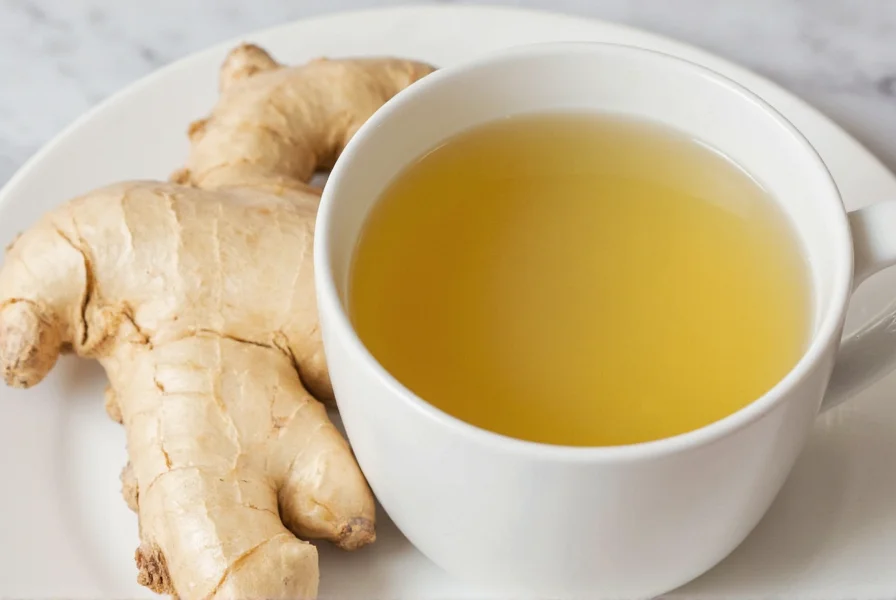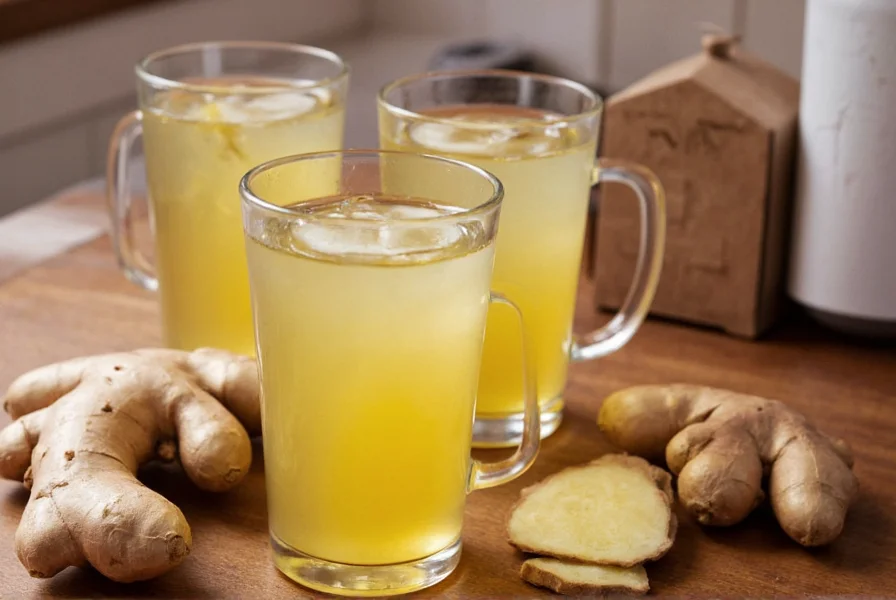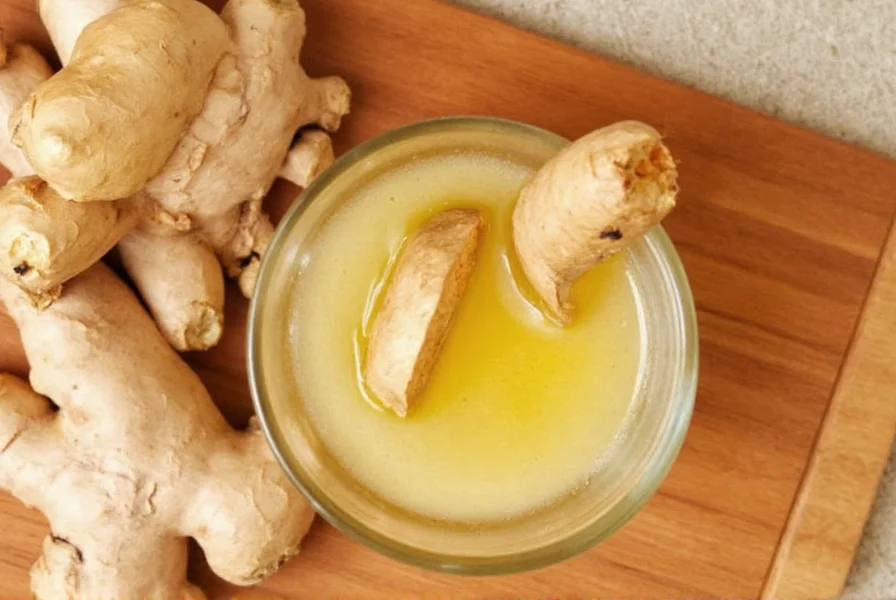Creating the perfect cup of ginger tea with fresh ginger is simpler than many realize. Unlike powdered ginger, fresh ginger provides a vibrant, zesty flavor with more pronounced health benefits due to its higher concentration of gingerol, the compound responsible for ginger's therapeutic properties. Whether you're seeking relief from nausea, a digestive aid after meals, or simply a warming beverage, fresh ginger tea delivers both flavor and functional benefits.
Why Fresh Ginger Outperforms Dried in Tea
When exploring how to make ginger tea with fresh ginger, understanding why fresh matters is essential. Fresh ginger root contains approximately 5% gingerol by weight, while dried ginger has only about 1.5%. This significant difference means fresh ginger tea delivers more potent anti-inflammatory and antioxidant effects. The volatile oils that give ginger its distinctive aroma and many health benefits are better preserved in fresh root than in dried powder.
Essential Ingredients for Perfect Fresh Ginger Tea
Creating an authentic fresh ginger tea recipe requires minimal ingredients, but precise measurements ensure consistent results:
| Ingredient | Standard Measurement | For Stronger Tea | For Milder Tea |
|---|---|---|---|
| Fresh ginger root | 1-2 inches (2.5-5 cm) | 3-4 inches (7.5-10 cm) | ½-1 inch (1.25-2.5 cm) |
| Water | 2 cups (475 ml) | 2 cups (475 ml) | 2 cups (475 ml) |
| Lemon (optional) | 2-3 slices or 1 tbsp juice | 1 wedge | 1-2 slices |
| Honey (optional) | 1-2 tsp | 1 tbsp | ½ tsp |
Step-by-Step Fresh Ginger Tea Preparation
Follow these precise steps for the best homemade ginger tea recipe using fresh ingredients:
- Prepare the ginger: Wash 1-2 inches of fresh ginger root thoroughly. Using a spoon (not a peeler), scrape off the thin skin—this method preserves more ginger flesh and essential oils.
- Slice or crush: For stronger flavor, crush the ginger with the side of your knife. For milder tea, slice thinly. Julienne cutting provides maximum surface area for optimal extraction.
- Boil water: Bring 2 cups of filtered water to a rolling boil in a small saucepan.
- Simmer ginger: Add prepared ginger to boiling water, reduce heat, and simmer uncovered for 10-15 minutes. Longer simmering (up to 20 minutes) creates more intense flavor and benefits.
- Strain and serve: Pour through a fine mesh strainer into your cup. Add lemon or honey if desired, but try it plain first to appreciate the pure ginger flavor.

Pro Tips for Superior Fresh Ginger Tea
Mastering how to make ginger tea with fresh ginger involves understanding these professional techniques:
- Ginger selection: Choose firm, smooth roots with tight skin and minimal wrinkles. Heavier pieces indicate higher moisture content and freshness.
- Storage method: Store unpeeled ginger in an airtight container in the refrigerator for up to 3 weeks, or freeze whole for up to 6 months.
- Steeping science: Simmering (not boiling) preserves volatile compounds. Boiling for more than 20 minutes can degrade some beneficial compounds.
- Flavor enhancement: Add a cinnamon stick or a few cloves during the last 5 minutes of simmering for complementary flavors that enhance ginger's natural properties.
Common Mistakes to Avoid in Fresh Ginger Tea Preparation
When learning how to prepare ginger for tea, watch out for these frequent errors:
- Using a vegetable peeler which removes too much valuable ginger flesh
- Boiling ginger for too short a time (less than 8 minutes) resulting in weak flavor and reduced benefits
- Adding honey to boiling tea (which destroys beneficial enzymes in raw honey)
- Using old, dried-out ginger that lacks potency
- Over-boiling which can create a bitter taste
Variations for Different Needs and Preferences
Once you've mastered the basic fresh ginger tea recipe, try these evidence-based variations:
- Digestive aid version: Add 2-3 fresh mint leaves during the last 5 minutes of simmering
- Cold-fighting tea: Include 1 sliced lemon and 1 tsp turmeric powder for enhanced immune support
- Sleep-promoting tea: Combine with ½ tsp dried chamomile flowers for calming effects
- Metabolism booster: Add a slice of fresh turmeric root alongside the ginger

Storage and Reheating Guidelines
Properly stored fresh ginger tea maintains its quality and benefits:
- Cool completely before transferring to an airtight glass container
- Refrigerate for up to 3 days (flavor intensifies slightly over time)
- Freeze in ice cube trays for longer storage (up to 3 months)
- Reheat gently without boiling to preserve beneficial compounds
- Avoid reheating multiple times as this degrades quality
Understanding Ginger Tea's Health Benefits
Research shows that regularly consuming properly prepared fresh ginger tea offers several evidence-based benefits:
- Reduces nausea and morning sickness (multiple clinical studies confirm this)
- Decreases muscle pain and soreness after exercise
- May lower blood sugar levels in people with type 2 diabetes
- Provides anti-inflammatory effects that may help with osteoarthritis
- Supports digestion by speeding gastric emptying
Remember that these benefits are maximized when using fresh ginger prepared correctly, as the active compounds degrade over time and with improper preparation.
Frequently Asked Questions
How much fresh ginger should I use for one cup of tea?
For a single cup (8 ounces) of tea, use ½ to 1 inch (1.25-2.5 cm) of fresh ginger root. This provides sufficient flavor and benefits without being overpowering. If you prefer stronger tea or are using older ginger, you can increase to 1.5 inches. Remember that younger, fresher ginger has more potent flavor than older roots.
Can I reuse ginger for multiple tea batches?
Yes, you can reuse ginger for 2-3 batches of tea. After the first use, store the used ginger in the refrigerator. Each subsequent batch will be milder than the previous one. For best results, gently reheat the ginger with fresh water rather than bringing to a full boil again. The ginger loses potency with each use, so by the third batch, the flavor and benefits will be significantly reduced.
What's the optimal steeping time for fresh ginger tea?
The ideal simmering time for fresh ginger tea is 10-15 minutes. This duration extracts maximum gingerol (the active compound) without developing bitterness. Research shows that 10 minutes of simmering extracts approximately 85% of available gingerol, while 15 minutes extracts about 92%. Boiling for more than 20 minutes can degrade some beneficial compounds and create a slightly bitter taste.
Is it better to slice, grate, or crush ginger for tea?
Crushing ginger with the side of a knife releases the most flavor and beneficial compounds because it breaks the cell walls more effectively than slicing. Grating creates the most surface area but can make straining difficult and may result in a cloudy tea. Slicing is the most traditional method and provides consistent flavor extraction. For the strongest tea, crush the ginger; for milder tea, slice thinly. Julienne cutting (thin matchstick pieces) offers a good middle ground.
When's the best time to drink fresh ginger tea?
Drink fresh ginger tea 20-30 minutes before meals to aid digestion, or after meals to reduce bloating. For nausea relief, sip small amounts throughout the day. Many people enjoy it in the morning as a gentle wake-up beverage (though it doesn't contain caffeine). Avoid drinking large quantities right before bed as ginger can be mildly stimulating for some people. For maximum digestive benefits, consume 15-20 minutes before eating.











 浙公网安备
33010002000092号
浙公网安备
33010002000092号 浙B2-20120091-4
浙B2-20120091-4